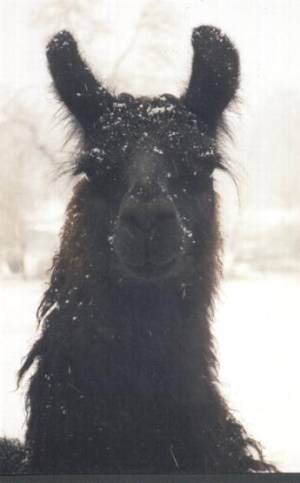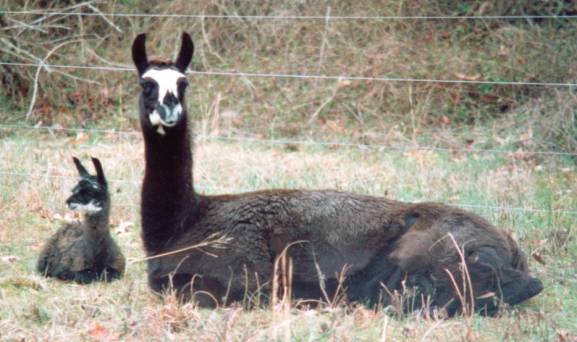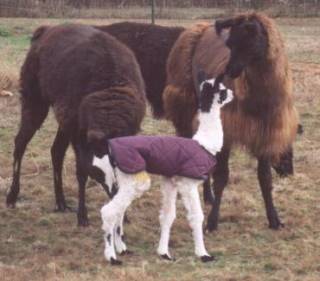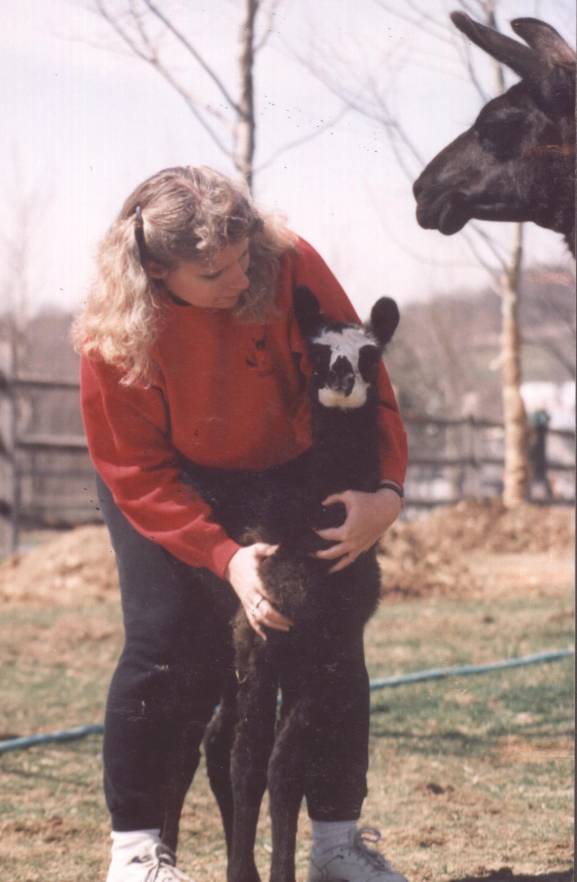|
Iron Hill Farm Llamas |
||||
|
By the way -- llamas are like potato chips -- you won't be able to get just one! So what do you do with llamas? Llamas are, much like any animal, what you make of them. Some people fuss with them and make them almost housepets. At the other end of the spectrum, some owners prefer to leave them be in their pastures and enjoy their beauty, but not so much their company. Iron Hill has animals with temperaments to match your desires. If we don't have one, we can steer you to other reputable breeders who might. Now, for the folks who need a reason to own a llama, here are a few:
What you need to keep llamas. This subject is handled much more completely in the links to the right. Here are some basics to give you an idea of what it takes. First, please be aware that like any animal, and maybe even more so, every individual llama is an individual. Every generalization made here and elsewhere is just that: it describes most llamas in most circumstances, but not all llamas and not all of the time. Be aware that these are big (250 to 400 lb, 5 to 6 ft at the eye) animals, and they don't think like humans. Respect and consideration of safety for you and your animals are paramount.
Llamas require a fenced pasture, of course. We use both wire fabric and high tensile (5-wire) types. These animals don't generally test your fence, so tremendously strong ones aren't usually necessary. Electric fences are usually unneeded, unless you have a particularly eager intact male separated from but right next to a female pasture. We don't recommend barbed wire. We do recommend building a "catch pen" -- a small, 6x10' or so area in the pasture within which you can work closely with your animals individually. Llamas eat grass and hay. They enjoy llama feed, and feeding them from your hand is a good way to become friends. A 45-pound bale of orchardgrass or Bermuda feeds a grown llama for a week and a half. There are a few plants poisonous to any animal that you should watch out for in any pasture, including common ones here in the Southeast.
Llamas need to be able to get out of the heat, so we recommend a small
area of shade trees. A barn to let them get out of the rain, wind
and cold is very nice, but a three-sided enclosure with a roof works just
fine and maybe better. You might find that they prefer to stand
outside in the rain rather than go into the shed much of the time!
You will probably need to shear your animals yearly, in the spring, and maybe twice in the deep South or Southwest. This keeps them cool and prevents heat stress. Shearing is something you can probably do yourself, and we'll help you learn how, but there are services that come do it for a price. You need to talk to veterinarians in your area to make sure one will help you with your animals. Llamas aren't hard to doctor, just a little different. A good relationship with a competent vet will go a long way toward improving the health of your animals and increasing your self-confidence as a llama owner.. You will need to worm the animals regularly and give them routine shots to prevent particular diseases as recommended by your vet. Your state may also require some vaccinations. Many of the links to the right will outline this well. Worming, in particular, is easier if you have a good relationship with your animals. Otherwise it can require, er, physical activity. Why they don't make wormer taste like sweet feed is beyond us! Do llamas spit? and other stuff.
Where can I get some? Call or e-mail us!
Iron Hill Farm (256) 259-2164 Updated 7/24/2005 |
The Llama Question and Answer Page The Southern States Llama Association (SSLA) The Alpaca and Llama Show Association (ALSA) The International Llama Registry (ILR) |
|||
|
|
||||
 You
gotta get a llama. Or two. Llamas are beautiful, graceful, calming and fun.
They are reasonably easy and inexpensive to keep, generally considerably
better than horses (maybe even dogs!) in this regard. They are
generally healthy and robust.
You
gotta get a llama. Or two. Llamas are beautiful, graceful, calming and fun.
They are reasonably easy and inexpensive to keep, generally considerably
better than horses (maybe even dogs!) in this regard. They are
generally healthy and robust.

